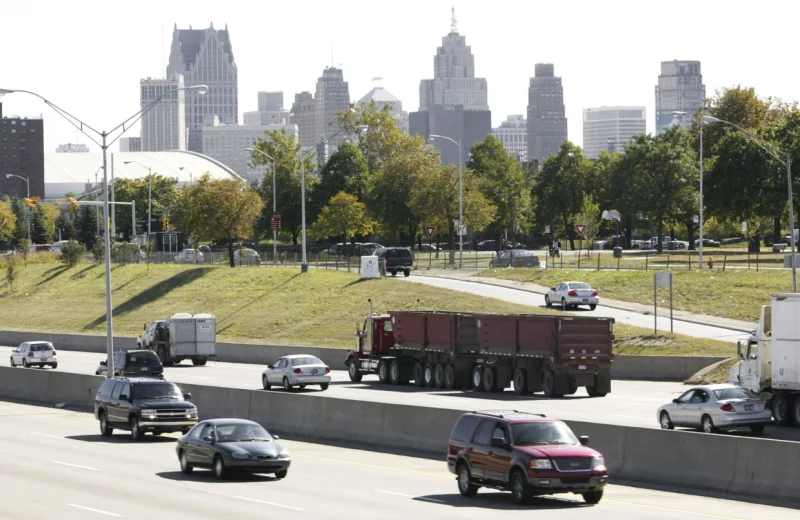Groups across the country are fighting efforts to expand ‘harmful’ highways
Share
Explore Our Galleries
Breaking News!
Today's news and culture by Black and other reporters in the Black and mainstream media.
Ways to Support ABHM?
By Char Adams, NBC News

Nearly 60 years after a mile-long interstate uprooted a pair of bustling Black neighborhoods in Detroit, leaders plan to turn part of the highway into a lower-speed boulevard in a $300 million project that will reconnect those neighborhoods and cut down on highway pollution. Last month, the Biden administration awarded Michigan $104.6 million in grant funding from the 2021 bipartisan infrastructure law to help with the project.
Black Bottom was a predominantly Black neighborhood in the city and the adjacent Paradise Valley served as the town’s entertainment and business district, boasting jazz clubs and several other Black-owned businesses. The area was razed and some 100,000 Black residents were displaced when the city built Interstate 375 in 1964 as part of the country’s interstate highway program, which established more than 40,000 miles of interstates across the United States — demolishing homes, crippling communities and perpetuating inequality in the process.
“It’s a physical barrier that divides up a community or separates one community from another,” said Antoine Bryant, Detroit’s director of planning and development. “It’s a key initiative where we’re looking to ensure that we’re righting a policy wrong from, essentially, 60 years ago. It led to the demise of not only the center for African American culture, housing and promotional activity, but also the elimination of generational wealth for many African Americans in the city.”
The project, set to break ground in 2024, will fill the trench that carries the highway and add amenities like bike lanes, wider sidewalks and pedestrian crossings, Bryant said. Transportation Secretary Pete Buttigieg acknowledged the harmful impacts of the 1956 highway program when launching the grant initiative over the summer, saying, “we can’t ignore the basic truth that some of the planners and politicians behind those projects built them directly through the heart of vibrant, populated communities — sometimes in an effort to reinforce segregation. Sometimes because the people there had less power to resist. And sometimes as part of a direct effort to replace or eliminate Black neighborhoods.”
Fortunately, Black neighborhoods known as Bronzevilles are seeing a resurgence.
Why not stop by our breaking news before you leave?









Comments Are Welcome
Note: We moderate submissions in order to create a space for meaningful dialogue, a space where museum visitors – adults and youth –– can exchange informed, thoughtful, and relevant comments that add value to our exhibits.
Racial slurs, personal attacks, obscenity, profanity, and SHOUTING do not meet the above standard. Such comments are posted in the exhibit Hateful Speech. Commercial promotions, impersonations, and incoherent comments likewise fail to meet our goals, so will not be posted. Submissions longer than 120 words will be shortened.
See our full Comments Policy here.